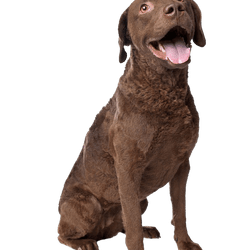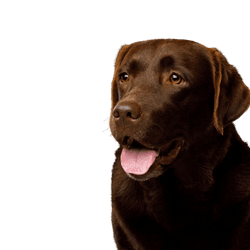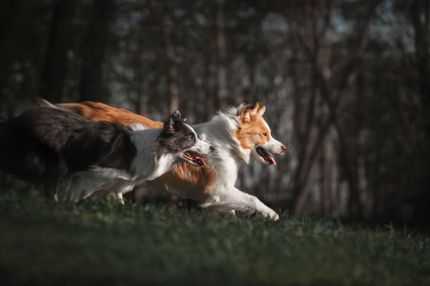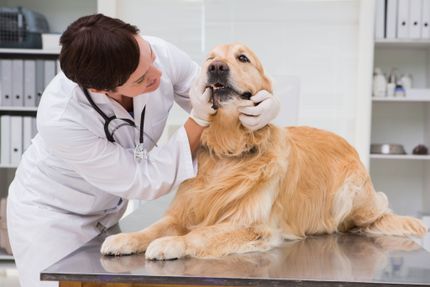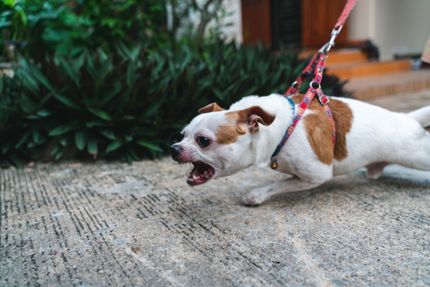Chesador:Chesapeake Bay Retriever and Labrador Retriever Mix
Facts & Origin
Chesapeake Bay Retriever and Labrador Retriever Mix - a hybrid breed.
The Chesapeake Bay Retriever and Labrador Retriever mix is a mixed breed known for its athleticism, intelligence and friendly nature.
Mixed breeds between Chesapeake Bay Retrievers and Labrador Retrievers are medium to large dogs that combine the characteristics of both parents. Chesapeake Bay Retrievers are known for their tough, waterproof coats and ability to work in water, while Labrador Retrievers are known for their intelligence, friendliness and ability to be easily trained. Mixed breeds between these two breeds could therefore be ideal for households that spend a lot of time around the water, or for people looking for a dog that is intelligent and easy to train. They tend to be active and need regular exercise and mental stimulation to stay happy and healthy. Their coats may require regular grooming to stay in good condition. Generally, these dogs have a life expectancy of about 10 to 14 years.
| Alternate Name | - |
| Origin | USA - UK |
| Life expectancy | 10 - 14 years |
| Care requirements | low-maintenance |
| Activity level | high - average |
| FCI group | not recognised |
| AKC group | not recognised |
| KC group | not recognised |
More Labrador Retriever mixes
Attitude, character and temperament of the breed
Possible character traits of Chesapeake Bay Retriever and Labrador Retriever mix - Such is probably his nature.
The first thing you need to know about a Chesapeake Bay Retriever and Labrador Retriever mix is that they are extremely intelligent and very easy to train. They are also very compatible with children and other animals, which makes them a perfect family dog. This breed is also known for being very loyal and protective of their family and home.
When it comes to exercise, this breed loves to play and requires some daily activity. They are also swimmers and love to retrieve things, so a pool in the backyard or access to a lake or river would be ideal.
As for personality, Chesapeake Bay Retrievers and Labrador Retriever mixes are friendly, outgoing and energetic. They are always up for a game of fetch or a good belly rub. They are also usually very food motivated, so training with positive reinforcement is a breeze.
Overall, a Chesapeake Bay Retriever and Labrador Retriever mix is a great companion for an active family. They are loving, intelligent and easy to train and will provide years of loyalty and companionship.
Character
Usage


Health and breeding information
What diseases can affect Chesapeake Bay Retriever and Labrador Retriever mix.
The Chesapeake Bay Retriever-Labrador Retriever mix breed is known to be affected by a few different diseases. Some of these diseases include hip dysplasia, elbow dysplasia, and PRA (progressive retinal atrophy).
In hip dysplasia, the hip socket is not fully formed, which can cause pain and lameness. Elbow dysplasia is a similar condition that affects the elbow joint. PRA is an eye disease that causes blindness.
Treatment for these diseases can be expensive, so it's important to be aware before getting a Chesapeake Bay Retriever-Labrador Retriever mix. Fortunately, there are tests that can be done before acquiring a puppy to determine these diseases.
What does this mixed breed look like?
The Chesapeake Bay Retriever Labrador Retriever mix has a dense, water-resistant coat that is either brown or yellow. This mixed breed is known for being an excellent swimmer thanks to its webbed feet and strong, muscular body.
As far as grooming goes, this breed is relatively low maintenance. A weekly brushing is sufficient, although they do shed seasonally.
What are breed characteristics of this mix dog?
The Chesapeake Bay Retriever is a large, muscular dog with a thick, double coat. He typically weighs between 30 and 50 kg and has a shoulder height of 55 to 70 cm. It has a broad head with a pointed muzzle and medium sized ears set high on the head. They have a deep chest and a strong, straight back. Their tail is of medium length and is typically carried in a "screw" or "sickle" shape. Their legs are strong and straight, and their feet are webbed, making them easier to swim. They come in a variety of colors, including brown, black and yellow.
| Fur length | short |
| Fur | curly - flat coated |
| Ear shape | Triangle |
| Tail | lang |
| Anatomy | strong, rugged, massive |
| Size ♀ | 53 - 61 cm |
| Weight ♀ | 25 - 32 kg |
| Size ♂ | 57 - 66 cm |
| Weight ♂ | 29 - 32 kg |
| Suitable For | - |
Known Diseases
Elbow dysplasia (ED)
Elbow joint dysplasia is a chronic disease complex of the elbow joint of fast growing dog breeds.
Hip dysplasia (HD)
The hip dysplasia or hip joint dysplasia of the dog (HD) is a maldevelopment of the hip joint.
Eye diseases
Often occur with allergies and intolerances.
Joint damage
In some breeds, joint damage can occur later in life, affecting the musculoskeletal system.
Overweight
Often, unfortunately, the dogs very much under excess weight. But the dogs themselves are never to blame!
FAQ
-
A typical life expectancy for a Chesapeake Bay Retriever and Labrador Retriever mix is 10 to 12 years.
-
Yes, they make great family pets as they are incredibly loyal and loving. They are also very gentle and affectionate towards children.
-
This mixed breed is considered to be relatively easy to train, as they are very intelligent. They also respond well to positive reinforcement methods such as treats and praise.
-
No, they are not usually good guard dogs, as they are not particularly aggressive or territorial. However, they may bark at strangers if they feel threatened or uncomfortable.
-
Yes, they should walk several hours a day.
Useful Articles
You can find articles that might interest you in the dogbible blog to match your favorite breed.
Visit our magazineto stay up to date on dog trends.
To find out more, view our Privacy Policy
Find here the breed that suits you and find out what character traits it has. Here you can also learn more about the origin, size and weight of your favorite breeds.
Matching your favorite breed, you'll find articles that might interest you on the dogbible dog blog.
Holland trip with dog - these are the most beautiful places
Epilepsy in dogs - Recognize, treat
Dry food or wet food for the dog - which is the better option
